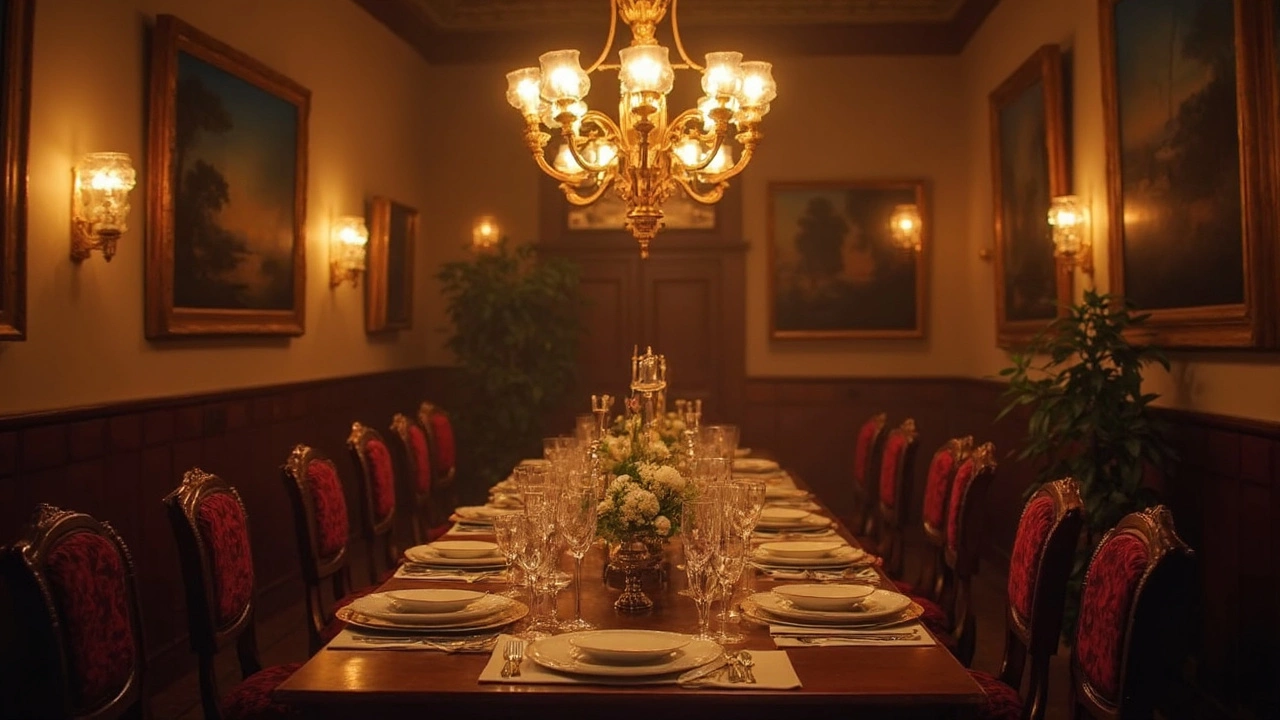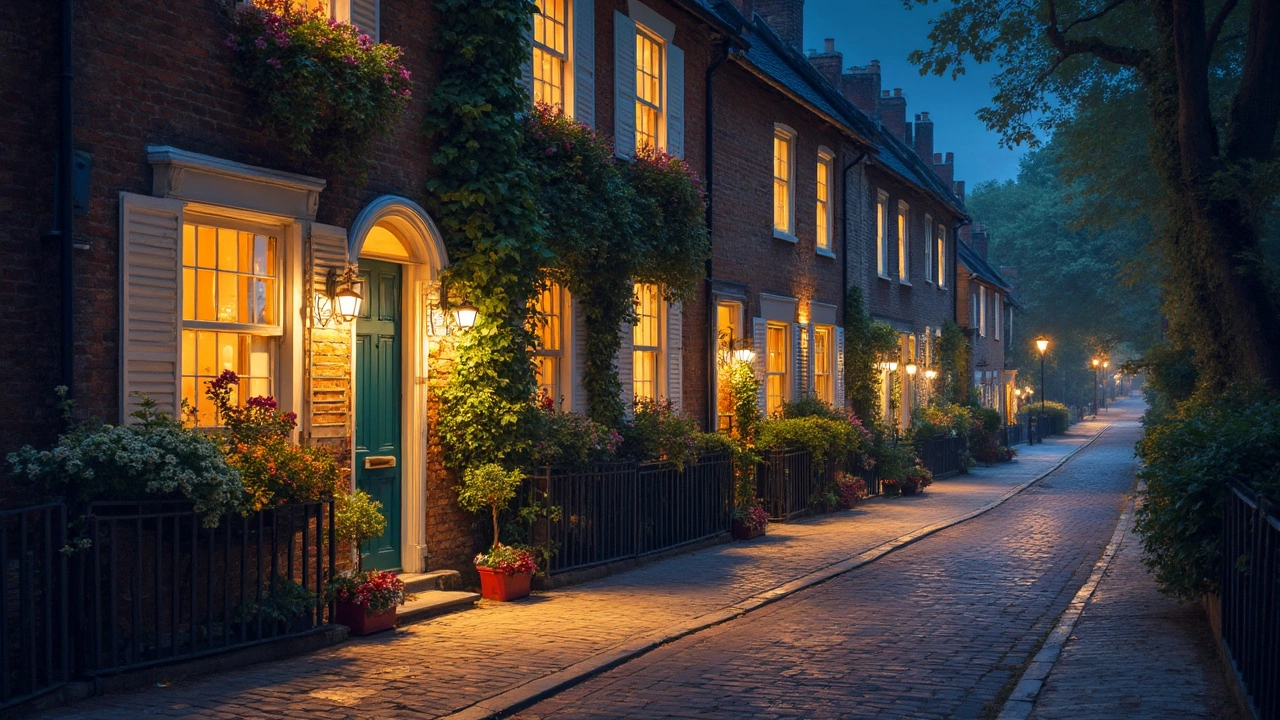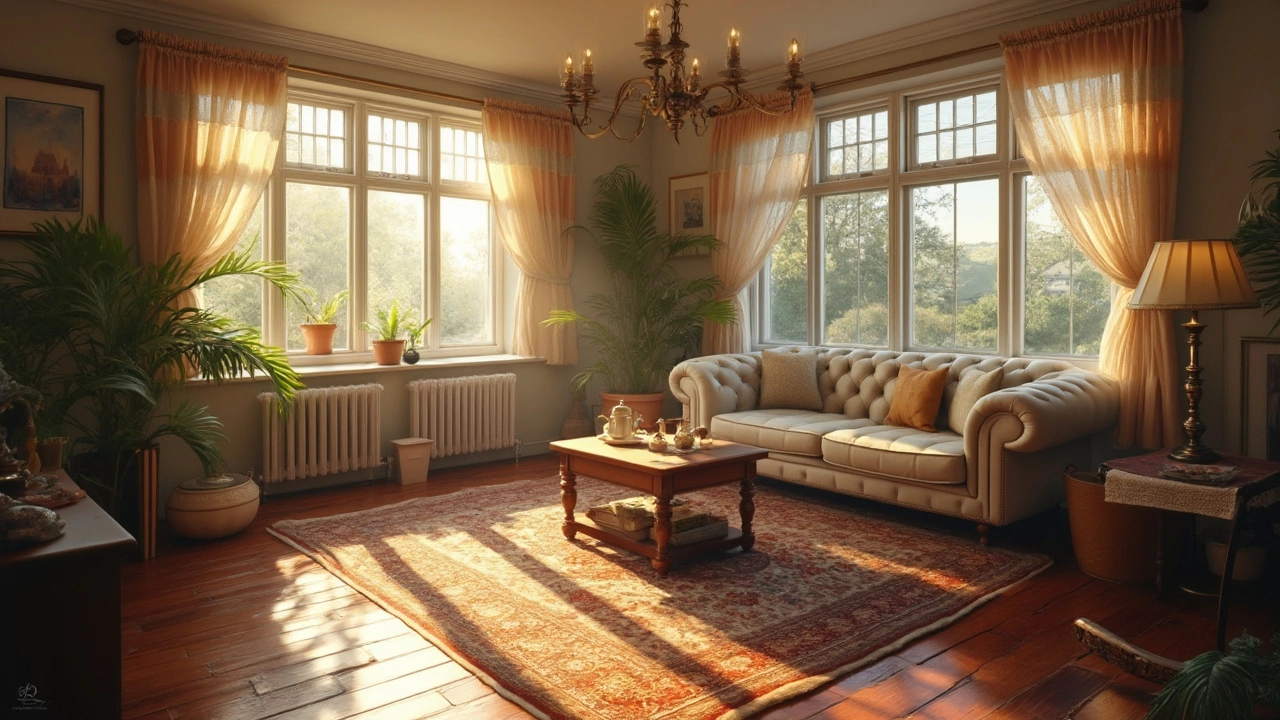Ever walked into a house and felt immediately wowed by the space? It's not just the square footage or trendy decor at play—lighting is the undercover hero here, especially when selling your home. Buyers are looking for spaces they can imagine living in, and great lighting can highlight the best aspects of your home, from kitchen countertops to bathroom alcoves.
Think about it: no one wants a house that feels like a dungeon. Adding light can make spaces appear larger, more open, and even boost mood! When someone steps into a brightly lit living room, they’re more likely to feel positive and engaged. Studies even suggest that well-lit homes tend to sell faster and for more money.
The magic begins with understanding how to effectively use different types of light. It’s not all about keeping every bulb blazing like it’s a Las Vegas casino. A good mix of natural light during the day and cleverly placed artificial lights for those evening showings can set the scene perfectly. Each room deserves its own strategy, whether it’s installing dimmers in the living room to create a cozy feel or bright task lighting in the kitchen to highlight functional spaces.
- Importance of Lighting in Home Selling
- Natural Light vs. Artificial Light
- Types of Indoor Lighting
- Practical Lighting Tips for Home Staging
- Common Lighting Mistakes to Avoid
Importance of Lighting in Home Selling
Believe it or not, the right home lighting can make a big difference when you're trying to sell a house. It's like putting the perfect Instagram filter on every room—a little tweak that makes everything look just right. When potential buyers walk in, they want to feel comfortable and welcomed. Good lighting helps create that inviting atmosphere.
First off, light affects mood. A well-lit space can uplift spirits, making buyers feel more positive about your home. If rooms are dark and gloomy, it can be a turn-off. Brightening up your house isn’t just about flipping switches; it involves strategic placement and using the right type of light in each room. It's almost like casting actors in roles—they all have their own special part to play in the story that is your home.
Boosting Perception of Space
Proper lighting can make small spaces appear larger and more open. Rooms that are meant to be cozy, like a living room or bedroom, benefit from softer, warm lighting. Meanwhile, areas like the kitchen and bathroom might need brighter, clearer light to highlight cleanliness and functionality.
This balance is key: you want to avoid overly harsh lighting that can flatten everything out, but also steer clear of lighting that's too dim to show off your home's features. Natural light is always a winner, so during showings, keep those curtains open and let the sunshine in!
Creating Focal Points
Lighting can also be used to draw attention to specific areas or features within the home, like a beautiful piece of art or a stunning fireplace. Accent lighting, such as spotlights or sconces, can work wonders here. It's about gently guiding where you want the buyers to look and what you want them to remember.
| Lighting Type | Best For |
|---|---|
| Ambient | Overall room lighting |
| Task | Focused areas like kitchen counters |
| Accent | Highlighting design features |
So, whether it's adding a few extra lamps, changing up lightbulbs, or bringing in some well-placed fixtures, investing in lighting when prepping your house for sale can really pay off. Remember, people can't buy what they can't see, so make sure they see your home in the best light—literally.
Natural Light vs. Artificial Light
When it comes to selling a house, understanding the balance between natural light and artificial light is crucial. Natural light is a home hunt essential; people like to see well-lit and airy spaces. But when the sun isn't willing to cooperate, it's time for artificial lighting to step up.
Embracing Natural Light
Natural light has the magic touch of making any space feel bigger, cleaner, and more inviting. If you got it, flaunt it! Draw back those heavy drapes, clean the windows till they shine, and maybe even consider trimming any outside foliage that blocks light from entering. Homes with abundant natural light are not only more energy efficient but often preferred by buyers, as they make spaces feel more connected to the outside world.
Studies have found that homes with ample sunlight exposure have a positive impact on mood and well-being, which could be a big plus for potential buyers. So, do everything possible to emphasize those sunny vibes during viewings.
The Role of Artificial Light
Now, let's talk about artificial lighting. This is your chance to shape the mood and vibe of your home, especially when natural light isn't enough. Consider layering your lighting by using a mix of ambient, task, and accent lighting. Ambient lighting is your main source, like ceiling fixtures or recessed lights, filling the entire room. Meanwhile, task lighting helps you focus on specific areas, such as kitchen countertops or reading nooks. Accent lighting highlights special features, like artwork or architectural details.
Installing dimmer switches is a smart move as it allows potential buyers to adjust the ambiance to their liking during viewings. Also, don't forget about color temperature. Bulbs come in varying temperatures, measured in Kelvin, and can influence how a room is perceived. Warmer temperatures (2,700K to 3,000K) usually create a cozy feel, while cooler ones (5,000K to 6,000K) might suit kitchens and bathrooms better.
- Tip: Consider replacing old light bulbs with LED versions. They have a longer lifespan and can be more energy-efficient, another selling point for eco-conscious buyers.
- Pro Tip: Use mirrors opposite windows or artificial light sources to bounce light and create an illusion of more space.
Ultimately, the trick is to use both forms of light to your advantage. Merge the natural with the artificial creatively, and you'll set the right tone for every room, making it feel welcoming and ready to be loved by a new family.

Types of Indoor Lighting
When it comes to indoor lighting, not all lights are created equal. If you're prepping your home for potential buyers, understanding the different types of indoor lighting will be your guiding torch. You'll be able to highlight the best features of each room and create the mood buyers are irresistibly drawn to.
1. Ambient Lighting
Think of ambient lighting as the backbone of your home’s lighting plan. It serves as the primary source of light, providing general illumination for daily activities. Ceiling-mounted fixtures, chandeliers, and recessed lights often do this job. If you want to impress, ensure your ambient lights are inviting but not harsh. Dimmers can be a game changer here, letting you adjust lighting depending on the time of day or the vibe you want to create.
2. Task Lighting
Task lighting narrows its focus on specific spots, providing targeted illumination for activities like reading, cooking, or working at a desk. Consider pendant lights above kitchen islands or desk lamps in study areas. Buyers will appreciate well-lit task areas that promise practicality along with aesthetics. Bonus points if they make everyday tasks seem chic!
3. Accent Lighting
Accent lighting is your tool for showing off. Spotlighting an art piece, architectural detail, or fireplace can create focal points that draw buyers' eyes. This type of lighting can also add depth to a room, making it appear more spacious. LED strip lights, under-cabinet lights, and track lighting are popular choices for accents. When used creatively, accent lights can add drama and elegance to even the simplest rooms.
Balancing the Trio
To really nail your home lighting, balance is key. Combining ambient, task, and accent lighting in the right proportions can transform interiors and lead viewers to fall head over heels for your home. The ultimate goal is simple: create a cohesive lighting plan that enhances each room’s character.
Practical Lighting Tips for Home Staging
When it comes to making your home stand out on the market, lighting is something you can’t ignore. Staging your home with the right home lighting can be a game-changer. Let’s talk about some practical tips to make your house shine, literally.
Maximize Natural Light
Natural light is your best friend. Start by opening up those curtains and blinds wide during the day to let in as much daylight as possible. A room filled with natural light feels larger and more inviting.
Neutral is Necessary
While funky, colored lights might be fun for a party, they’re not ideal when showing off your home. Stick to soft whites and neutral tones. This creates a universally appealing atmosphere. Opt for LED bulbs that mimic daylight as they are energy-efficient and give off a flattering light.
Layer Your Lighting
Think of your lighting setup as a good outfit with layers. You want ambient lighting to fill the room, task lighting for specific activities, and accent lighting to highlight your home’s best features.
- Install overhead fixtures for general illumination.
- Use table or floor lamps to brighten up dark corners or reading nooks.
- Consider wall sconces or under-cabinet lights to add a touch of elegance.
Optimize Bulb Wattage
Using inconsistent wattages can create uneven lighting. Go for consistent bulb wattages across different areas to ensure a uniform light flow. Bulbs between 60-75 watts are typically ideal for most spaces.
Highlight Key Features
Have a beautiful piece of art or architectural detail? Use spotlights or picture lights to draw attention to them. This can add character to your home and give buyers a focal point to remember.
Don’t Forget Outdoor Spaces
First impressions matter, and they start at the front door. Outdoor lighting at pathways, porches, and gardens can create inviting curb appeal, welcoming potential buyers from the get-go.
Stat Summary
Did you know that 80% of real estate agents agree that lighting a room appropriately is one of the key factors in selling a house? Adding extra light fixtures can even increase your home’s value by 1%.

Common Lighting Mistakes to Avoid
Getting your home lighting just right can feel like walking a tightrope. It’s easy to go wrong, especially when you’re trying to impress potential buyers. Here are some common lighting mistakes to steer clear of if you want your property to shine bright.
Overlooking the Power of Natural Light
A glaring mistake many homeowners make is not harnessing natural light. Blocking windows with heavy curtains or furniture can make rooms feel smaller and duller. Always make sure to maximize the natural light by keeping windows clean and using sheer drapes.
Ignoring Layered Lighting
Relying solely on one light source in a room can result in dark corners and uninviting spaces. Use a mix of ambient, task, and accent lighting to create a warm and welcoming atmosphere. A single overhead light often doesn’t cut it.
Using Mismatched Bulbs
Nothing throws off the vibe of a room like light bulbs of varying colors and intensities. Stick with a consistent color temperature to maintain harmony. For most homes, a soft white or daylight bulb works wonders.
Neglecting Outdoor Lighting
The charm of well-placed outdoor lighting is massively underrated! Don't wait until someone trips to realize the pathway lighting is crucial. Install lights along paths, driveways, and entryways for safety and curb appeal.
Forgetting About the Dimmer
Dimmers are a game-changer. Being able to control the intensity of your home lighting based on time of day or activity adds versatility and appeal. Failing to install dimmers means you’re missing out on an easy and impactful update.
By avoiding these common missteps, you’ll boost your home’s overall appeal and make a lasting impression on every prospective buyer who walks through your door.
